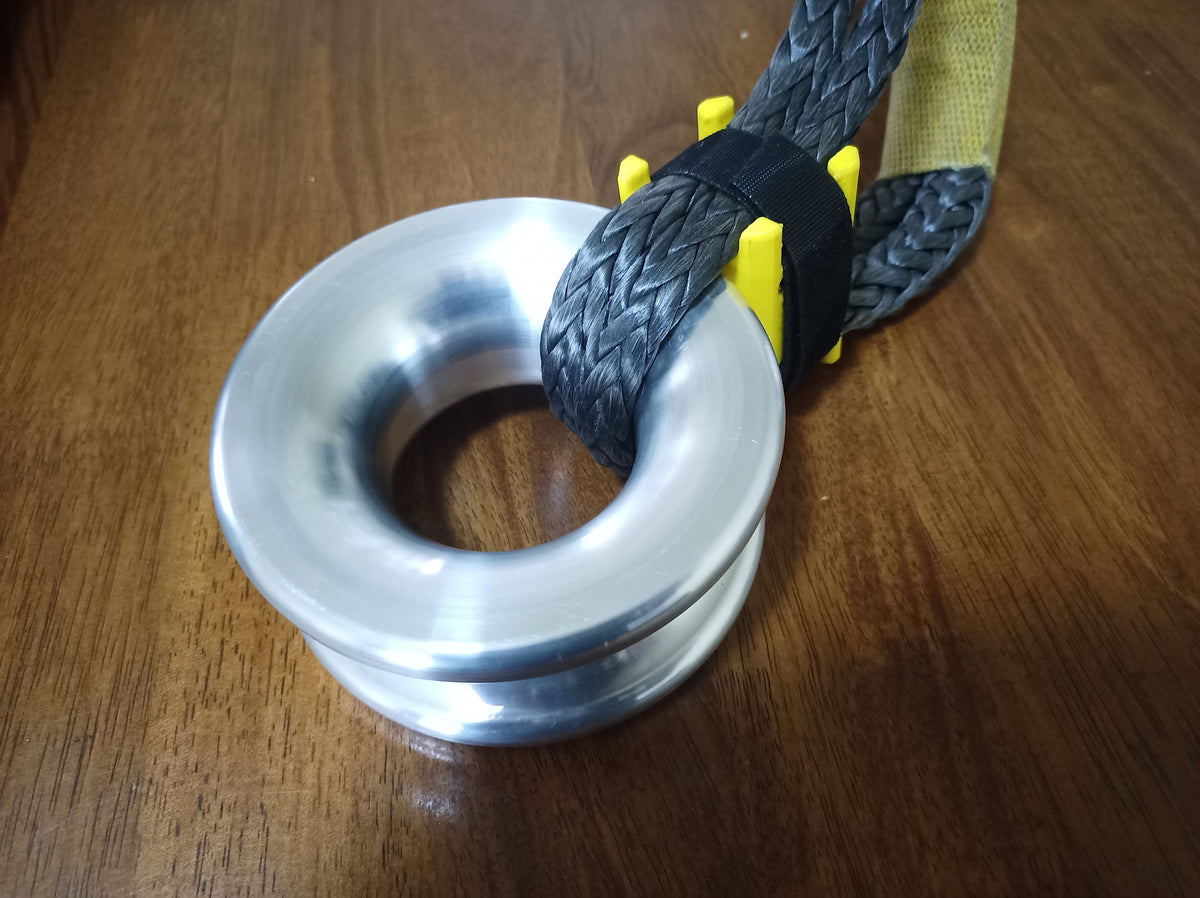Metcalf
Expedition Leader
Let's talk about the concept of being able to double rig recovery rings for 4-5:1 mechanical advantage

I've gotten asked a lot since releasing my own Recovery Ring design why I made it a chunky 2 inches thick with such a large center hole and gentle ID radius, well this is ONE of the reasons why. I know this is going to be controversial, but this technique will allow a 4 or 5:1 mechanical advantage with only two Recovery Rings and no winch extension required like in a Spanish Burton. In order to do this safely, the Ring soft shackles will have to be increased in load capacity. ( And we will be providing this option in the near future) The forces this system can generate are amazing if you have a slightly underpowered winch and\or are in a situation where you are very close to the anchor\load and require much more force than a traditional single pulley can provide. Is this going to be a super common use practice, no. Does having gear that can accommodate these techniques add value to already amazing quality gear, absolutely! The only real 'catch' is that you have to be able to fit the end of the winch line through the center on the ring.....you can do that right?
Here is a good video on Youtube about the technique.
Questions?

I've gotten asked a lot since releasing my own Recovery Ring design why I made it a chunky 2 inches thick with such a large center hole and gentle ID radius, well this is ONE of the reasons why. I know this is going to be controversial, but this technique will allow a 4 or 5:1 mechanical advantage with only two Recovery Rings and no winch extension required like in a Spanish Burton. In order to do this safely, the Ring soft shackles will have to be increased in load capacity. ( And we will be providing this option in the near future) The forces this system can generate are amazing if you have a slightly underpowered winch and\or are in a situation where you are very close to the anchor\load and require much more force than a traditional single pulley can provide. Is this going to be a super common use practice, no. Does having gear that can accommodate these techniques add value to already amazing quality gear, absolutely! The only real 'catch' is that you have to be able to fit the end of the winch line through the center on the ring.....you can do that right?
Here is a good video on Youtube about the technique.
Questions?

